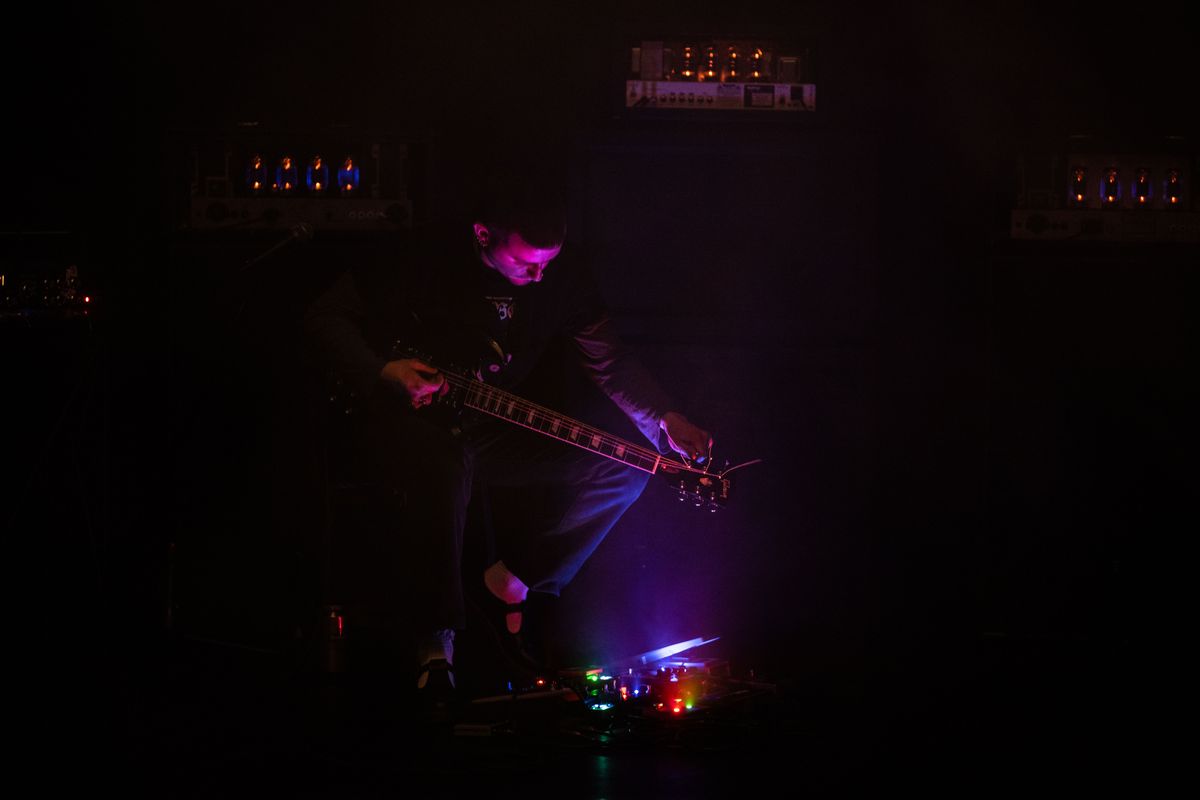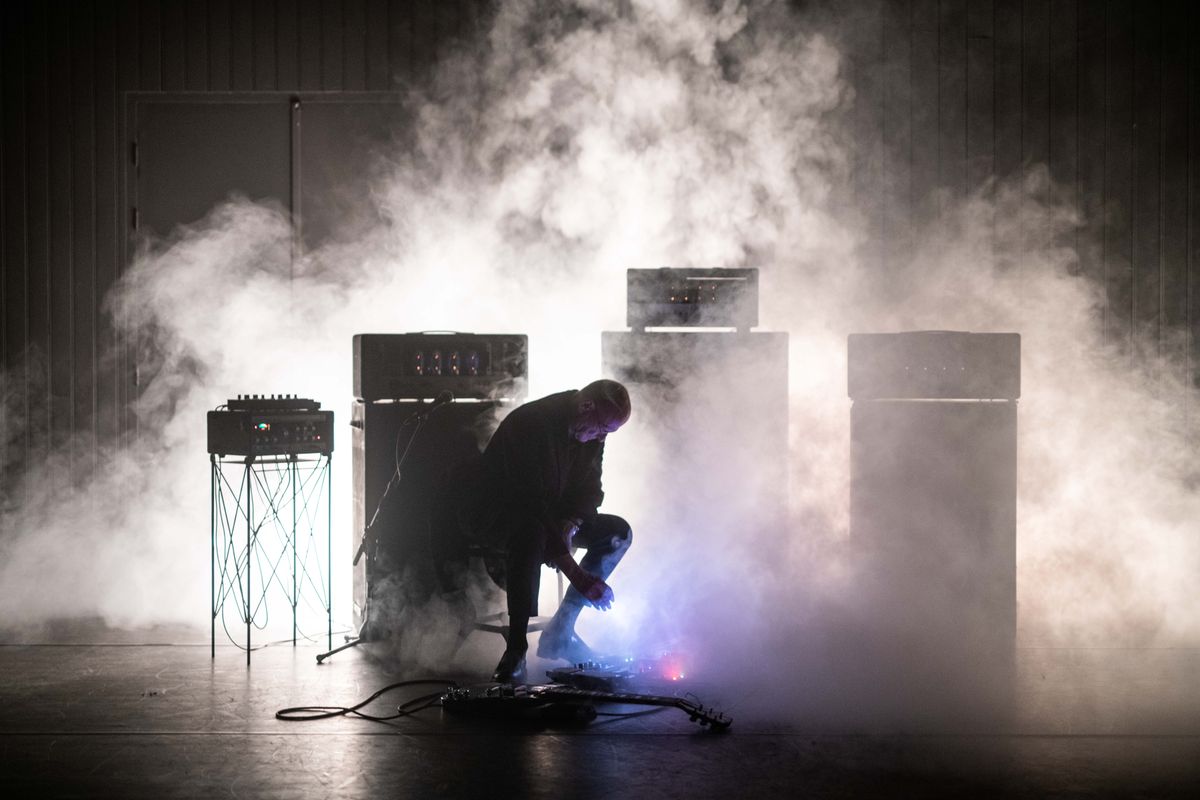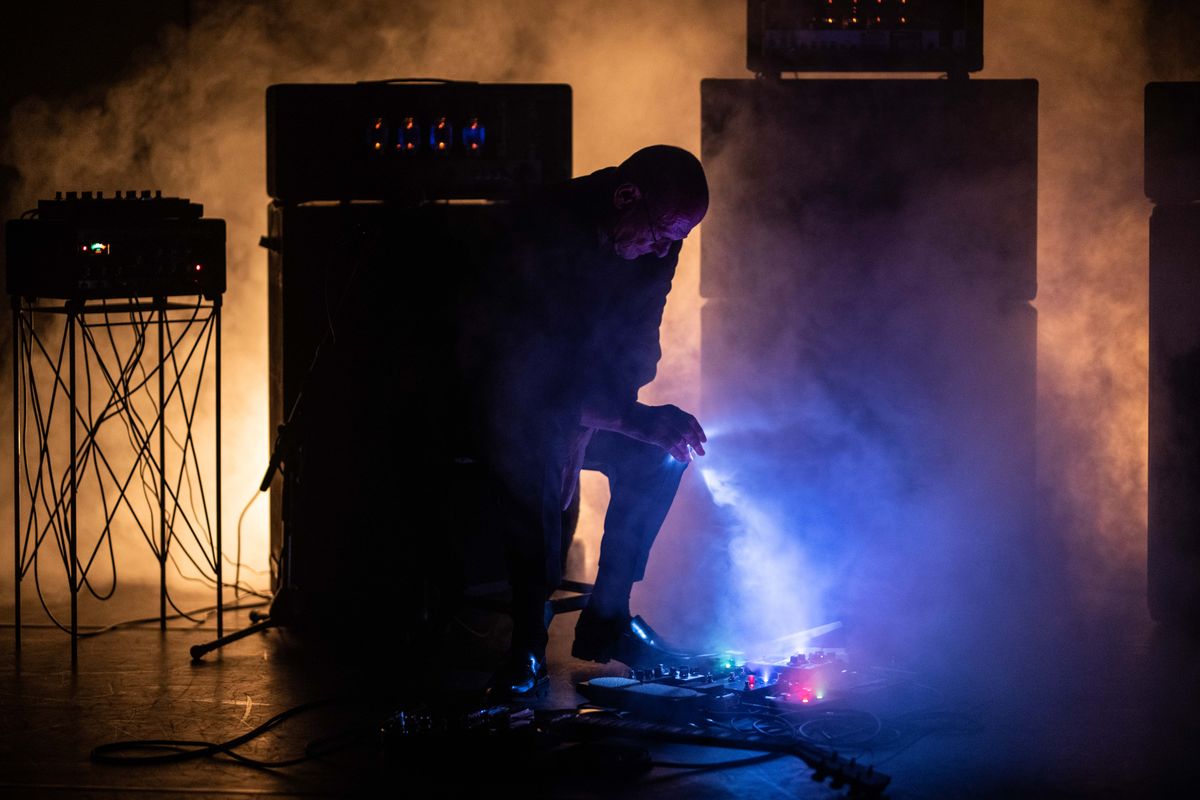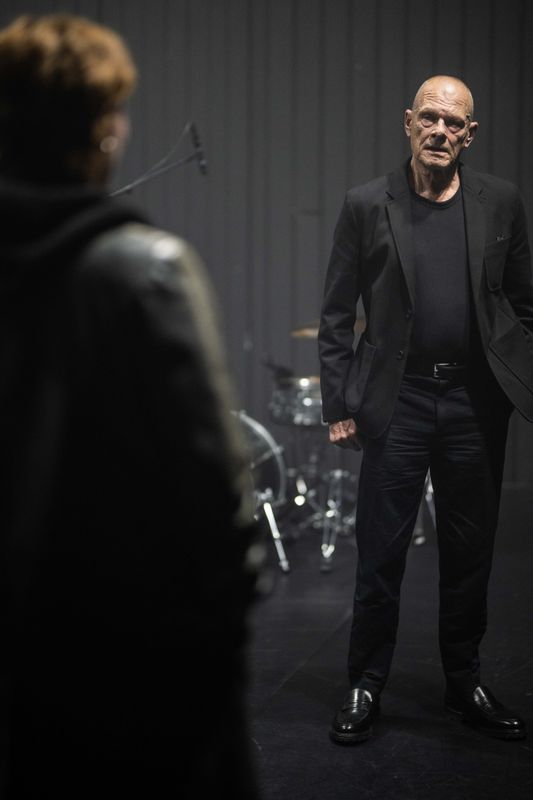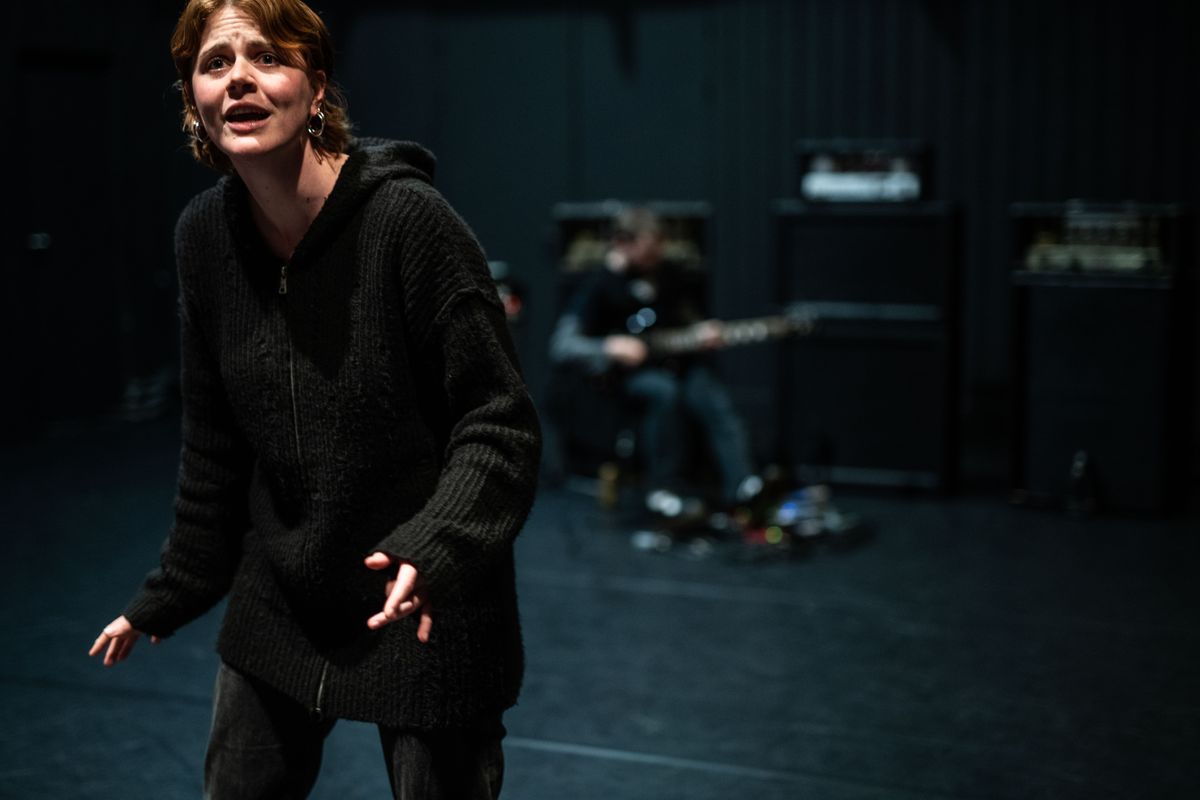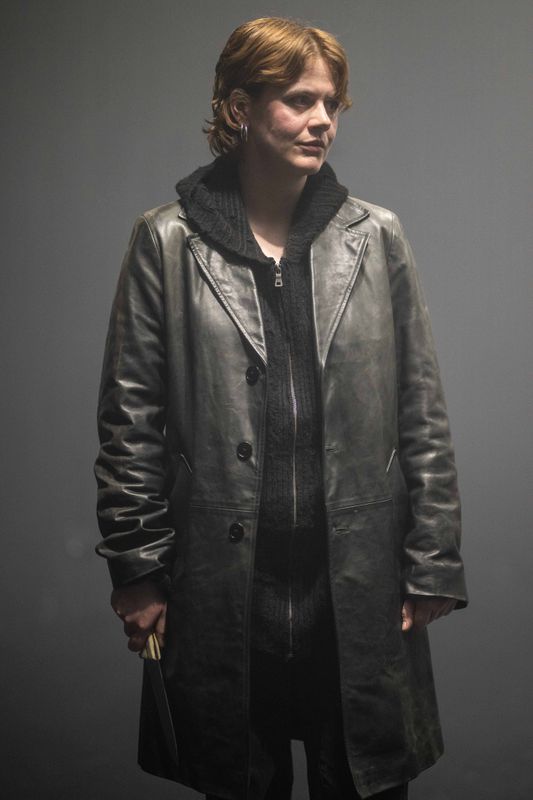Essay: Erasmus Mackenna on Katie Cruel
It was off the back of our previous creation with LENZ, Sheath and Knife, that the plans for Katie Cruel were born. We’d found a real love and fascination for Scots-Irish murder ballads a few years ago and Sheath and Knife was the start of our exploration into how we could take both the stories and sounds of traditional murder ballads and rediscover them now, with new stories and styles that didn’t exist back when they were first written and performed.
Murder ballads as depictions of society
I grew up in Scotland and ballad culture was something that grasped me at an early age. I sung at primary school and attended ceilidh dances whenever I could. A murder ballad is, simply put and in it’s broadest sense, a song in which someone is intentionally killed. They exist typically in traditional music but at this point they appear in almost all musical genres. Traditional music and murder ballads are in everlasting transformation due to oral tradition, translations, migration and reinterpretation, and that’s no different nowadays.
We were trying to find out what the stories in the ballads meant for us now and why they interested and touched us. We started to think of murder ballads as depictions of part of the society we live in, to try and find parallels that way. It was a pretty mixed feeling to discover that a lot of murder ballads are still relevant in the exact way they were when they were first written (for as far as it’s possible to trace a ballad to its original version; to its root). The representations of our world that murder ballads show us are, to put it mildly, bleak.
In the ballads, people are killed for all sorts of reasons, but the two most common are:
1.) to emancipate yourself from an oppressor, and
2.) to oppress someone you are jealous of.
Drone
The idea that struggle is timeless and universal throughout the ages is something that can be soothing. At the same time, it’s exhausting to hear stories from the 10th century sung that describe the same social violence towards the same communities as those that suffer today. Sheath and Knife focused on themes such as gender, class and bodily autonomy, exploring social mechanisms in the forms they existed up until the beginning of the 21st century; in Sheath and Knife, past and present meet each other. Musically, Sheath and Knife stayed close to the ballad’s root, and used traditional Scots-Irish instruments and arrangements for a number of ballads that were performed live in the piece. The musical backbone was the drone: a note that sounds steadily and infinitely. The drone was primarily used in voice and harmonium in our piece, and, for us, the drone is that which sounds through the ages.
the triangle of victim, perpetrator and onlooker
If a ballad’s story and themes reappear constantly through different generations, then we can call it cyclical. For example, a victim suffers at the hands of a perpetrator, experiences trauma, bears a child and carries this trauma on to the child, through both DNA and behaviour. You could say that, in this way, victim becomes perpetrator, purely through bearing offspring. Some victims may go on to become violent perpetrators, due to that which they have suffered. Simply put, for us, the drone in a murder ballad is the drone of trauma, both in sound and in story. Katie Cruel dives deeper, and therefore darker.
Two years on, we’re furthering our exploration of the murder ballad, with the same themes, but with some additions and different styles. It follows the peculiar meeting of an older man and a younger woman in a back alleyway at night. He’s the ex CEO of a multinational in a skyscraper, she’s a hardcore drone-metal musician who gigs in the basement on the other side of the street. What unfolds is a conversation in which they discover empathy for the other, and find each other not in deescalation, but in radicalisation.
From wood to metal
Aside from an intensification of violence both socially and physically, the largest shift in Katie Cruel is that of the perspective in time. The reverberations of violence from the past and present and how it manifests itself in the future is what grips us this time; the ever-growing intensity of trauma, born in our ancestors, amplified in us and thrusted upon future generations.
Katie Cruel explores our generation, a crumbling generation, crippled to the point of implosion and doom, one of the last generations of humankind whom we are told is doomed to end imminently. It’s also the material that’s shifted. Sheath and Knife used wood as it’s prime material, Katie Cruel uses metal and rust. In addition to gender, class and bodily autonomy, we add the theme of age to the mix. Instead of destroying the ruling class with violence, or succumbing to the numbing emptiness of civil life as they design it, we’re looking for a third way. We’re looking for a dialogue in which empathy is the key to our generation being given the space to form society as we wish to. The question is of course if empathy will be enough, but it’s the approach we believe in, and so that’s where we begin.
Musical inspiration
When it comes to music, the drone is distorted and amplified. When we started working on Katie Cruel, I was listening to lots of folk and metal. Black metal and drone metal had a real influence on me. The idea that catharsis could be found in extreme bleakness and suffering is something I’ve always recognised, but to hear musical forms that not only expressed that in sound but also in text was something that interested me. Feeling both intensely overstimulated and very relaxed at metal gigs is a concentrated version of what I feel daily living in our doomed, dying society.
Via drone metal I ended up listening to minimal music. I think the fact that I was listening to these genres daily, mixed through each other, really formed my thinking for what I personally wanted to explore in Katie Cruel. I realised that the combination of minimal-maximal forces was something I really wanted to experiment in. For example, extreme empathy in a super violent world, ballads sung in between screeching feedback, droned notes at extreme volumes, the importance of one conversation in changing the course of an individual’s life, and so forth. I met a few people in the past year who were really formative for my thinking about how to intertwine music and theatre, such as Tos Nieuwenhuizen.
theatre as a mental, emotional and physical experience
The idea of the experience of theatre being mental, emotional and physical was one of the things I really became interested in. I spent the past year doing loads of weird sonic experiments and surrounding myself with loud sound, and I think it was an anchor both personally and creatively. Katie Cruel is built on those principles of minimalism-maximalism, in both story and form. I really wanted to build a space in which both relief and struggle exist. The drone remains the backbone.
Lonely notes are droned through distortion and reverb units into heavy-duty tube amps, supported by vocals, tin whistle, drums and harmonium. Think buildings collapsing, rockets being fired across the world and helicopters crash landing. And in the crater of the explosion it remains: the lonely little lament for a life that’s hard to live in the midst of a dying species. Katie Cruel is that lament.
The fact that we’re telling this extreme story says a lot about where we’re at mentally and personally, but also where our generation’s at. I think there’s a lot of rage, rightly so, but there’s also a huge craving for relief and tenderness. It’s emotionally taxing, but looking societal doom in the eyes is surprisingly cathartic and hopeful. For me, Katie Cruel is a cry for help, not shouted, but whispered and sung.
-
Past eventTue 16 May ’23-Wed 8 May ’24
-
Tue 16 May ’2321:00Try-outFrascati, AmsterdamFrascati 2
-
Wed 17 May ’2321:00Try-outFrascati, AmsterdamFrascati 2
-
Thu 18 May ’2321:00PremièreFrascati, AmsterdamFrascati 2
-
Fri 19 May ’2321:00Frascati, AmsterdamFrascati 2
-
Sat 20 May ’2321:00Met boventiteling (EN + NL)Frascati, AmsterdamFrascati 2
-
Tue 23 May ’2321:00Frascati, AmsterdamFrascati 2
-
Wed 24 May ’2321:00Frascati, AmsterdamFrascati 2
-
Thu 25 May ’2321:00Frascati, AmsterdamFrascati 2
-
Fri 26 May ’2321:00Double bill: Katie Cruel + Tos Nieuwenhuizen (solo). Incl. boventiteling (EN + NL)Frascati, AmsterdamFrascati 2
-
Sat 27 May ’2321:00Frascati, AmsterdamFrascati 2
-
Sat 9 Mar ’2420:00Tourlocatie, AlmereFrascati Producties on tourCorrosia, Almere
-
Sat 16 Mar ’2420:30Tourlocatie, LeidenFrascati Producties on tourIns Blau, Leiden
-
Thu 21 Mar ’2420:00Tourlocatie, ArnhemFrascati Producties on tourTheater a/d Rijn, Arnhem
-
Thu 28 Mar ’2420:00Tourlocatie, UtrechtFrascati Producties on tourTheater Kikker, Utrecht
-
Wed 17 Apr ’2420:15Tourlocatie, Den HaagFrascati Producties on tourHet Nationale Theater, Den Haag
-
Fri 26 Apr ’2420:00Tourlocatie, HaarlemFrascati Producties on tourSchuur, Haarlem
-
Tue 7 May ’2421:00WITH SURTITLES (EN + NL)Frascati, AmsterdamFrascati 2
-
Wed 8 May ’2421:00WITH SURTITLES (EN + NL)Frascati, AmsterdamFrascati 2




